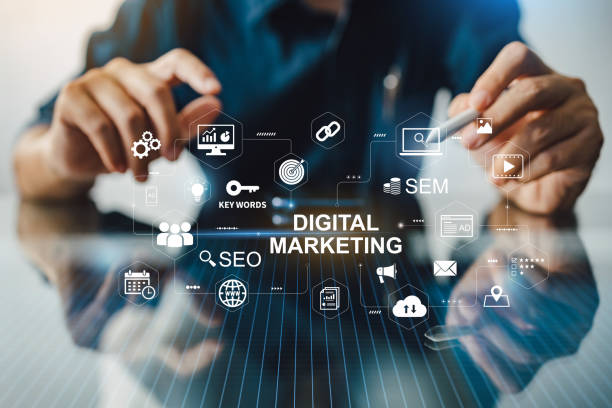
In a world where technology evolves rapidly and consumer behavior shifts in real-time, mastering digital marketing is crucial for staying competitive. Today’s businesses must go beyond traditional methods and adopt a data-driven, customer-centric approach to succeed in the digital realm. From SEO and social media to content marketing and automation, this article explores the essential strategies that help brands build meaningful connections, drive engagement, and achieve measurable results in a crowded online space.
Key Features
1. Search Engine Optimization (SEO)
Search Engine Optimization (SEO) focuses on improving a website’s visibility in search engine results, helping it attract more visitors naturally. By optimizing content, keywords, page speed, and mobile responsiveness, SEO ensures that online platforms appear higher in search rankings. This increased visibility not only drives more traffic but also builds trust and credibility with users. A well-executed SEO strategy leads to better engagement, higher conversions, and sustainable online growth.
2. Social Media Marketing
Social Media Marketing involves using platforms like Facebook, Instagram, LinkedIn, and Twitter to connect with audiences, build brand awareness, and drive engagement. Through consistent posting, audience interaction, and targeted advertising, it helps businesses reach potential customers where they spend much of their time. By sharing valuable content, running promotions, and responding to comments or messages, brands can strengthen relationships, increase loyalty, and generate leads or sales. With the right strategy, social media becomes a powerful tool for storytelling, community building, and business growth.
3. Email Marketing Automation
Email Marketing Automation is a powerful strategy that enables businesses to send personalized, timely, and relevant emails to customers without manual effort. By using automation tools, emails can be triggered based on user behavior, such as signing up, making a purchase, or abandoning a cart. This approach nurtures leads, improves engagement, and increases conversions by delivering the right message at the right time. With features like segmentation, A/B testing, and performance tracking, email marketing automation ensures efficiency while maintaining a personalized customer experience.
4. Pay-Per-Click (PPC) Advertising
Pay-Per-Click (PPC) Advertising is a paid online marketing model where advertisers pay a fee each time their ad is clicked. It’s a way to buy targeted visits to a website, rather than earning them organically. Platforms like Google Ads and social media networks allow businesses to bid on keywords, demographics, and interests to display ads to specific audiences. PPC offers quick visibility, measurable results, and full budget control—making it ideal for driving traffic, generating leads, and boosting conversions with precision.
5. Influencer and Affiliate Marketing
Influencer and Affiliate Marketing are powerful strategies that leverage partnerships to boost brand visibility and drive sales. Influencer marketing involves collaborating with individuals who have a loyal following to promote products or services through authentic content, building trust with potential customers. Affiliate marketing, meanwhile, focuses on performance-based partnerships where affiliates earn a commission for driving traffic or sales through their unique referral links. Both approaches allow businesses to expand their reach, engage targeted audiences, and achieve measurable results in a cost-effective way.
6. Personalization and Customer Segmentation
Personalization and Customer Segmentation are essential strategies for delivering meaningful and relevant customer experiences. Segmentation involves dividing a customer base into distinct groups based on behavior, preferences, demographics, or purchase history. Personalization uses this data to tailor content, product recommendations, and messaging to individual needs and interests. Together, they help businesses communicate more effectively, increase engagement, and boost conversion rates by showing the right message to the right audience at the right time.
7. Omnichannel Marketing
Omnichannel Marketing is a unified approach that delivers a seamless and consistent customer experience across all channels—whether it's online, in-store, mobile, social media, or email. It ensures that no matter where or how a customer interacts with a brand, the messaging, branding, and service remain connected and personalized. By integrating multiple touchpoints, businesses can engage customers more effectively, improve retention, and guide them smoothly through their buying journey.




